This article contains step-by-step instructions to backup files if Windows cannot start normally. The instructions are written to rescue your files on Windows 10/11 based computers, but can also applies also in Windows 8 & 7 PC’s.
One of the worst situations that can happen is when Windows won’t start normally and because you can’t repair them you have to do a clean installation of the operating system without having a backup of your files. If you’re in a such situation, then in this article you’ll learn how you can rescue you files if Windows could not start (without booting to Windows).
How to Back up Files Without booting to Windows 11/10.
Nội dung
* Notes:
1. Below you will find two methods to back up your files if your Windows crashes. The first method (WinRE), is for cases where you do not have access to another working computer or if you own a Windows 10/11 USB installation media, while the second one (Linux), is recommended when you have access to another working PC or when you do not have a Windows 10/11 USB installation media, or if you’re running Windows 7.
2. If you cannot rescue your files using one of the following methods, then your last choice is to remove the hard disk from the crashed PC and to attach it on another working computer to rescue your files.
Method 1. Rescue Files from Windows Recovery Environment (WinRE).
To back up your personal files in WinRE:
1. Shutdown the PC.and connect an external USB drive with enough free space to store the files.
2. Turn on the computer and open the Command Prompt in WinRE according to your situation and continue reading below:
- Case 1. If you see the Automatic Repair screen click Advanced options > Troubleshoot > Command Prompt. *
* Note: If you asked for the user’s password and you don’t know it, see the case-3 below.


- Case 2. If you don’t see the Automatic Repair screen, force Windows to display it by doing the following:
- Turn off your PC by pressing the power button for 5-10 seconds.
- Turn on your PC again, and when you see the spinning dots, press again the power button for 5-10 seconds to force turn off the computer.
- Repeat the above step two (2) more times.
- Finally leave Windows to enter in Automatic Repair screen and click Advanced options > Troubleshoot > Command Prompt.*
* Note: If you asked for the user’s password and you don’t know it, see the case-3 below.
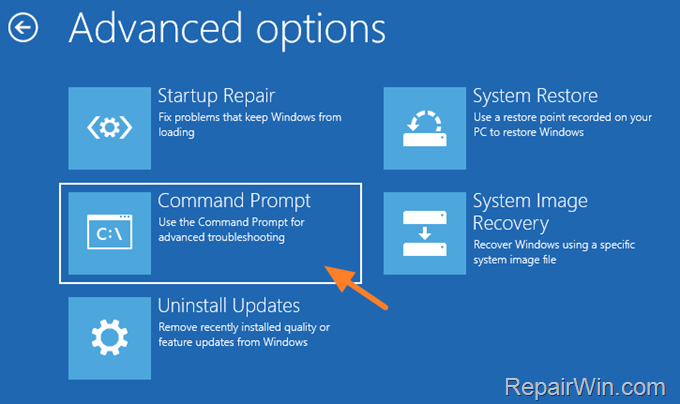

Case 3. If you cannot enter in Automatic Repair screen then to rescue your files you must have access to another working PC, in order to Create a Windows Installation Media on a USB disk. In case you already have a Windows Installation 10/11 Media on USB, proceed as follows: *
* Note: If you have access to another PC, I suggest to follow the instructions on Method-2 below and to rescue your files from a LINUX Live OS on USB.
- Boot the affected PC from the USB Windows Installation Media.
- At the ‘Language options’ screen press the SHIFT + F10 keys to launch command prompt. (or click Next > Repair your computer > Troubleshoot > Advanced Options > Command Prompt).
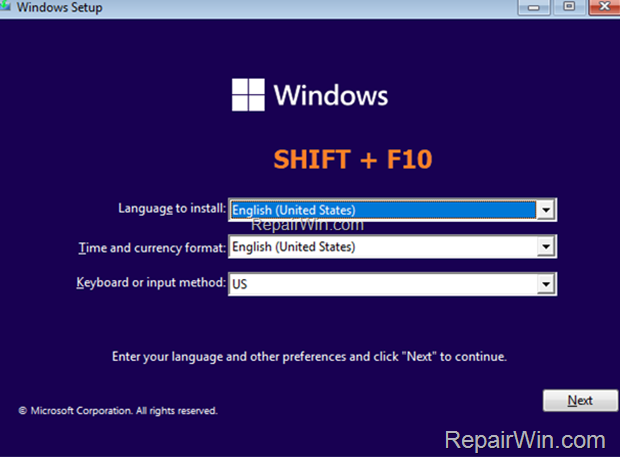

3. In command prompt type notepad and press Enter.


4. From the File menu click Open.
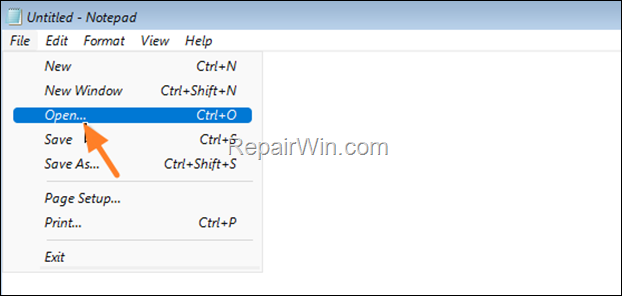

5. Click the This PC icon on the left and then locate and open the local disk with your files (e.g. D:).
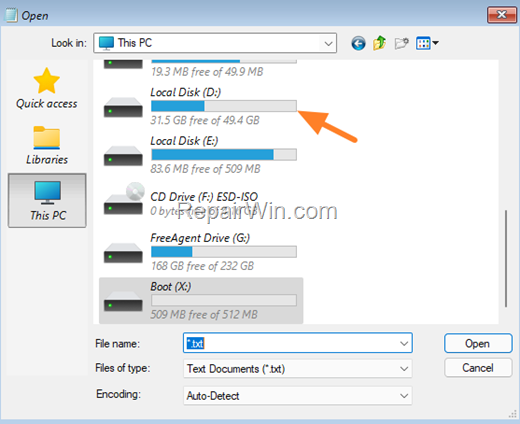

5. Now explore the contents of the drive, open the Users folder and then your “profile” folder. (The one with your account name).
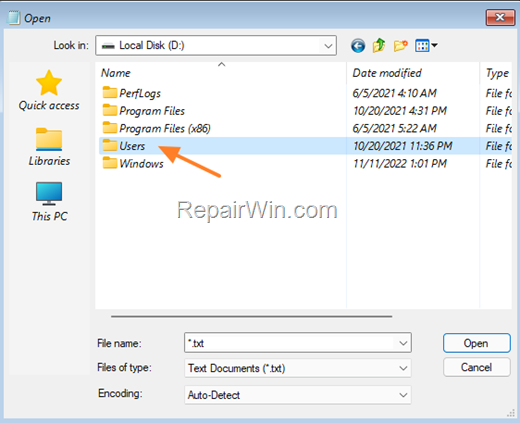

6. Now for every folder you want to backup to the external drive, do the following: *
- Right-click on the folder, select Send to and then click at the name of the external drive.*
* TIP: If you have started the PC from a Windows USB Installation Media that has enough free space, you can copy the files there.
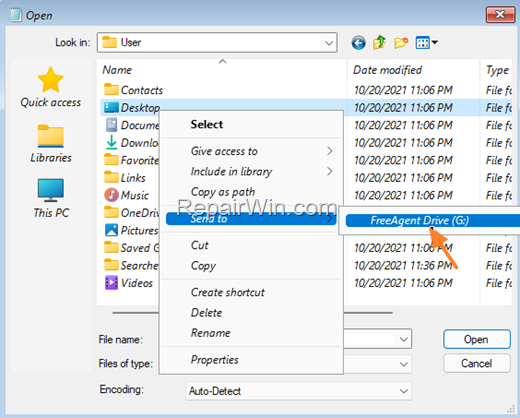

7. Now wait for the copying to complete, before you continue to backup the next folder. *
* Notes:
1. When copying a large volume of files, the mouse pointer will appear as spinning circle and computer looks to be stuck/freeze. This is happening because your computer is busy in the background with the copying. Be patient when this happens and wait until you see the mouse pointer as an arrow again. Then continue to copy the next folder, or to shut down the computer if you’re done with the backup.
2. If you want to view and copy files (and not folders), change the Files of type to All Files.
3. If you want to copy files from hidden folders (e.g. the “AppData” folder), give the following command in prompt and then re-open notepad.
- attrib -h -r -s /s /d X:*.*
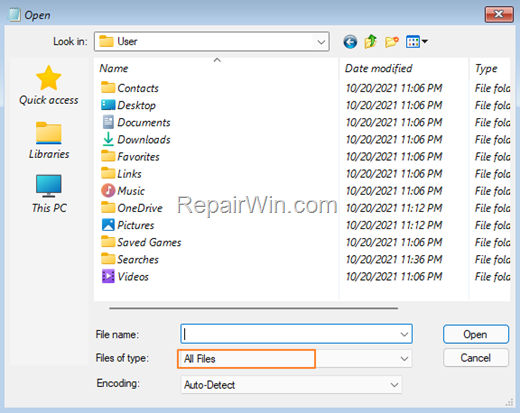

8. When you have finished copying all the files you want, explore the contents of the external disk to verify that all your folders files are there and you’re done! (Don’t forget to set the “Files of type” to “All files” in order to see all the types of the copied files)
Method 2. Back up Files if Windows won’t Boot using a LINUX LIVE OS on USB.
The next method to back up your files if Windows could not start is to boot your computer from a LINUX Live USB drive and to rescue your files from the LINUX OS. For this task, you’ll need to have access to another working PC.
Step 1. Create a Linux Live USB disk.
On a working PC:
1. Download Fedora 37 KDE Plasma Desktop in a ISO file. *
* Note: For this task you can use any Linux Live distro you want (e.g. Peppermint, Linux Mint, etc.), but in this tutorial we use the Fedora KDE Plasma Desktop.
2. Download RUFUS USB Creator.
3. Attach an EMPTY* USB drive and then run RUFUS.
* Note: This is important because the USB drive contents will be deleted during the USB Creation.
4. Click SELECT and then select the Fedora ISO file.
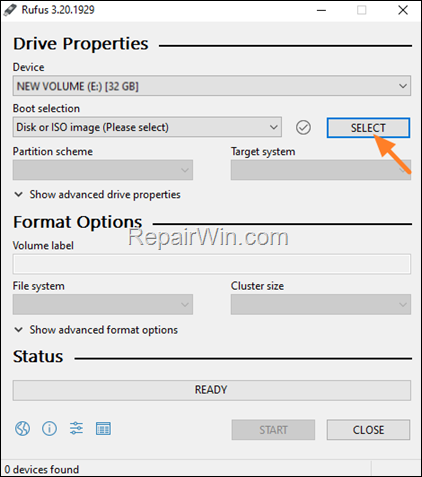

5. Select GPT at Partition scheme (Target system: UEFI) *
* Note: The latest operating systems usually runs in UEFI mode. if you want to use the LIVE USB disk on a MBR based system, set the Partition scheme to MBR.
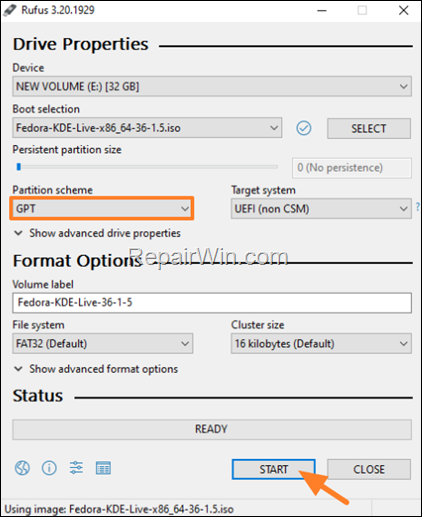

6. At the next screen leave the default setting “Write in ISO mode (Recommended)” and click OK.
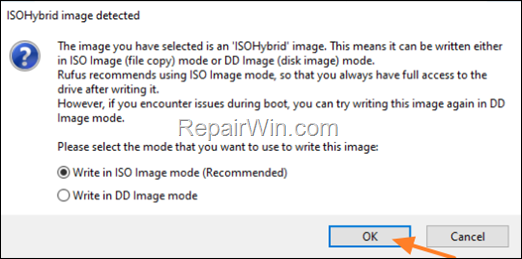

7. Finally read carefully the Warning message and if you agree press OK.
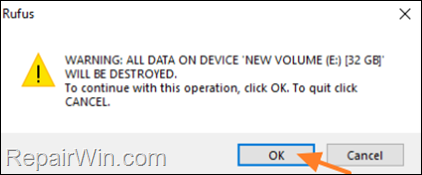

8. When the USB creation is completed click CLOSE and unplug the USB drive.
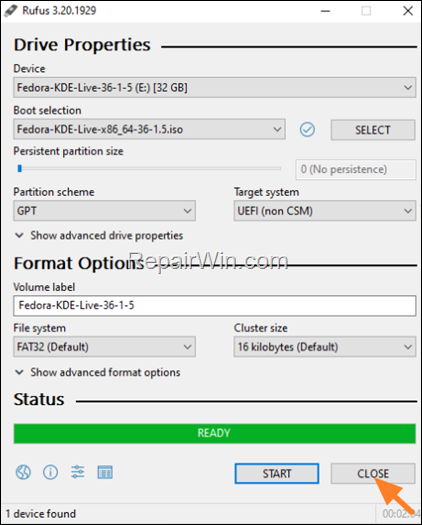

Step 2. Rescue your files from Linux Live OS.
On the computer you want to back up files from:
1. Attach the Linux Live USB Disk.
2. Attach an External USB drive with enough storage space to store your files. *
* TIP: If the Linux USB disk has enough free space, you can copy the files there.
3. Power on the PC and boot from the Linux Live USB disk.
4. Press Enter when prompted to Start Fedora.
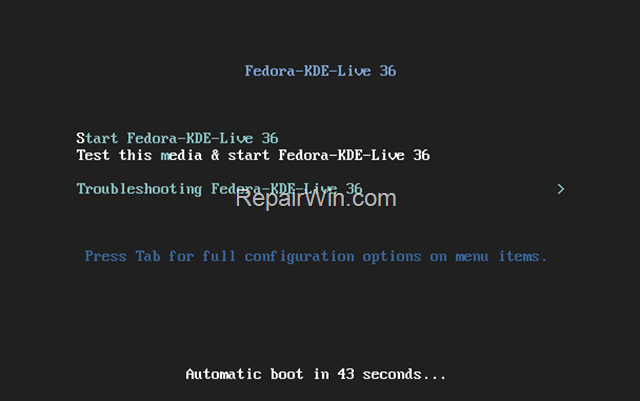

5. Open the File Manager icon at the Taskbar.
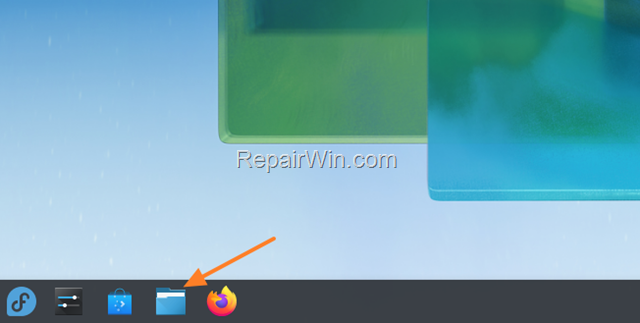

6. At the left pane ensure that the Internal Drive and the External USB drive for the backup are recognized by the system. *
* Note: If the Internal disk is not recognized, try the following:
- Shutdown the system, Disable the Secure Boot mode in BIOS setup and try again.
- Try to use another LINUX Live distro on USB.
- Attach the computer’s hard disk on a working computer and rescue the files from there.
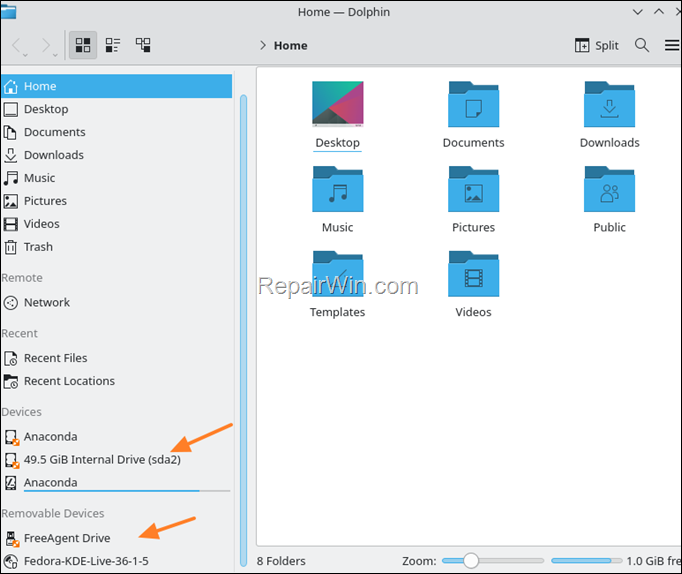

7. Locate on your main disk the folder(s) that you want to backup.
8. Right-click on the folder that you want to copy (or select multiple folders) and select Copy.
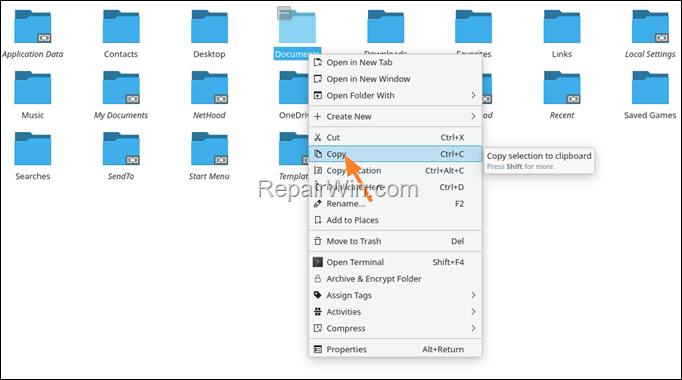

9. From the left pane double-click at the External USB disk and then right-click and Paste the copied folder.
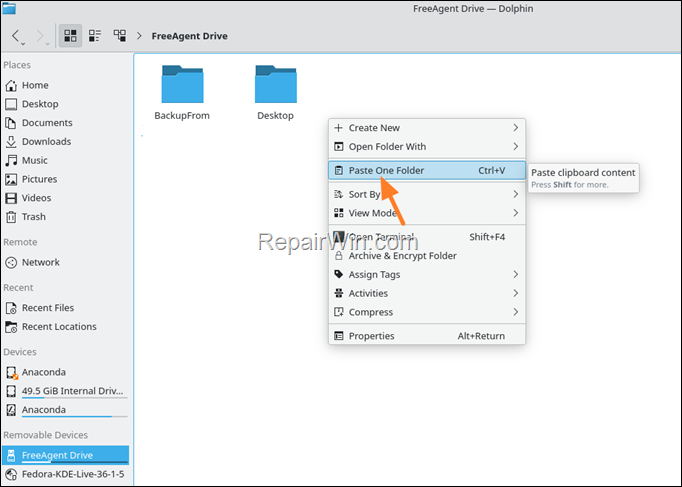

10. Repeat the same steps to rescue all your important files and folders* to the External USB drive and you’re done!
* Note: Usually you’ll need to copy the following folders from your user profile folder (C:Users>YOURUSENAME):
- Desktop, Documents, Downloads, Music, Pictures, Videos (+ any other folder you need)
That’s all folks! Which method worked for you?
Please leave a comment in the comment section below or even better: like and share this blog post in the social networks to help spread the word about this solution.

Bài liên quan
- FIX: Error 0x81000203 in System Restore. (Solved)
- Cannot Access Shared folder. User has not been granted the requested logon type at this computer. (Solved)
- FIX: Cannot clear TPM – 0x80284001, 0x80290300 or 0x80290304.
- Unable to Schedule Teams Meeting in 15 or 10 minutes slots (Solved)
- How to Share Folder without Username/Password on Windows 10/11.
- FIX: Thunderbird High CPU or Memory Usage issues.

